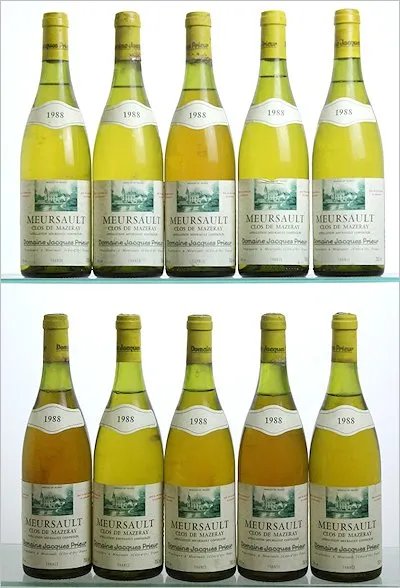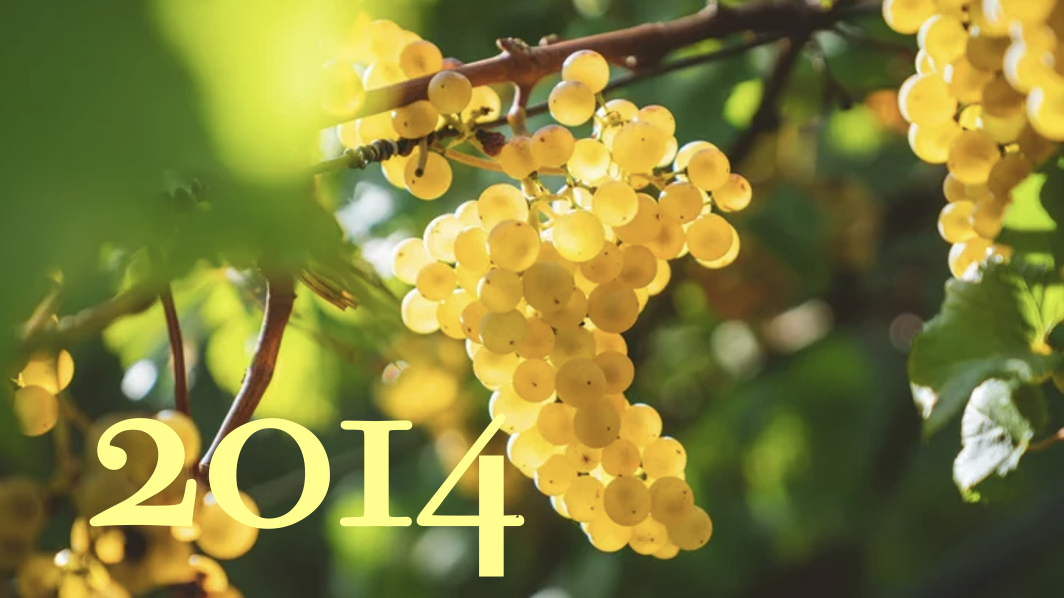The 2014 vintage for white Burgundy is celebrated for its purity and precision, often described as a “classic” vintage with excellent balance. The growing season began with a warm and dry spring, allowing for early budburst and successful flowering. However, challenges emerged in late June when a violent hailstorm struck parts of the Côte de Beaune, particularly Meursault, Volnay, and Pommard, significantly reducing yields. July and early August brought cooler, wetter conditions, leading to concerns about rot and disease pressure. Fortunately, the weather improved in mid-August, and a warm, sunny September ensured a leisurely harvest under favorable conditions. Producers praised the clean, ripe fruit that emerged despite earlier difficulties, with the absence of widespread rot ensuring a healthy crop overall
Quality and Style
The 2014 whites are characterized by their aromatic clarity, vibrant acidity, and mineral backbone, making them a standout vintage for long-term cellaring. The wines strike a good balance between richness and tension, with concentrated fruit flavors and remarkable finesse. While some wines may lack the opulence of other vintages, they are celebrated for their classicism and age-worthiness. Jancis Robinson highlights the “thrilling mix of richness and precision” in 2014 white Burgundies. Similarly, Jasper Morris notes that the vintage delivered wines with “excellent fruit concentration” and “minerality,” ideal for both immediate enjoyment and extended aging. This combination of energy and balance has made 2014 a favorite for many Burgundy enthusiast.
Lots of Premox bottles in our tasting
Unfortunately a recent tasting the crisp 2014 vintage does not seem to be immune to premox (premature oxidation) a phenomenon that has plague white Burgundy since the late 90ies. If you want to know more about premox, this article by Decanter gives a good summary. In a recent blind tasting 4/11 bottles (36%!) were flawed, three with premox (27%) and one with cork taint. These are not happy numbers…

Identical white Burgundy bottles with different levels of oxidation
Tasting Notes
2014 Domaine Francois et Antoine Jobard Meursault 1er Cru Charmes, 96 Points
A flinty, mineral-driven nose intertwined with lemon peel and subtle oak spice marks this as a refined and precise Chardonnay. The palate is racy and fresh, delivering layers of complexity that unfold with each sip. The balance here is impeccable, with vibrant acidity and focused fruit making for an altogether thrilling wine. A grand expression of white Burgundy, marked by both elegance and energy. My personal WOTN in this line-up and the group’s runner up.
2014 François Raveneau Chablis 1er Cru Les Forêts, 95 Points
This wine impresses with a complex nose of lemon cream, vanilla, and well-integrated oak, complemented by notes of popcorn and a whiff of matchstick. There is excellent mid-palate depth and structure, followed by a long, fresh finish that speaks to its well-judged balance. The interplay between richness and acidity with good complexity at every stage makes it a very complete offering. This was the WOTN of the group and my runner up.
2014 Domaine Maratray-Dubreuil Corton-Charlemagne, 93 Points
Rich and creamy on the mid-palate, this wine offers an engaging nose of lemon curd and a touch of freshness that keeps everything in balance. It’s a solid, crowd-pleasing white Burgundy with good weight and texture. However, while it has plenty of appeal, it stops short of delivering the complexity expected at the highest level. Nevertheless, an enjoyable expression of the vintage, if a bit conventional.
2014 Domaine Larue Puligny-Montrachet 1er Cru La Garenne, 93 Points
The grassy and flinty nose suggests origins outside of Burgundy, evoking comparisons to a Sancerre with its crisp, Sauvignon Blanc-like character. Light on the palate with good complexity, this wine surprises with its minerality and precision. Is this a Chablis? The wine’s cool-climate energy and tension make it an exciting, if atypical, candidate in this lineup.
2014 Guffens-Heynen Mâcon-Pierreclos Le Chavigne, 91 Points
Discreet nose, subtle hints of oyster shell and citrus, offering a delicate marine quality. Light-bodied on the palate, with a faint suggestion of celery and medium complexity, it is a wine that speaks more through its quiet restraint than its power. Its minerality and freshness make it an enjoyable, albeit subtle, expression of the terroir, perfect for those who appreciate understated elegance.
2014 Domaine Jean-Marc Pillot Chassagne-Montrachet 1er Cru Les Baudines, 89 Points
Light-bodied frame, with aromas of citrus peel and a modest complexity that suggests a restrained touch of herbs de Provence. There is a fine thread of freshness that runs throughout, lending the wine an inviting, vibrant finish. Though not overly complex, it offers enough aromatic nuance to captivate those who appreciate a more understated style.
2014 Domaine Morey-Coffinet Chassagne-Montrachet 1er Cru La Romanée, 88 Points
This wine leans heavily into herbal tones, with a distinct coconut note that speaks to a generous use of oak. While these elements are intriguing, the mid-palate falls short, revealing a somewhat hollow center that detracts from the overall harmony. The oak presence feels disproportionate to the wine’s structural depth, leaving a somewhat unresolved impression.
Flawed bottles
2014 Domaine Jean Chartron Puligny-Montrachet 1er Cru Clos du Cailleret, Flawed
Oxidized
2014 Domaine Morey-Coffinet Puligny-Montrachet 1er Cru Les Pucelles, Flawed
Oxidized
2014 Jean-Claude Bessin Chablis Grand Cru Valmur, Flawed
Corked
2012 Buisson-Charles Meursault 1er Cru Bouches-Chères, Flawed
Oxidized
Encores
2014 Domaine Harmand-Geoffroy Mazis-Chambertin 94+ Points
An encore red wine for the dinner. Opened with an attractive bouquet of red fruits, interwoven with earthy elements and a dash of spice. Mineral tones emerge, lending the wine an appealing complexity. On the palate, it’s fresh, precise, and well-balanced, with good acidity that ensures vibrancy. Approachable now, but undoubtedly capable of greater depth with 3-4 more years in the cellar.
Author: Christian Raubach, WSET III, FWS, WSG Champagne Master
October 2024

